2024 July Prize Spotlight
Congratulations to the following 15 SIAM prize recipients who will be recognized at the 2024 SIAM Annual Meeting (AN24), taking place July 8-12, 2024, and the co-located 2024 SIAM Conference on Discrete Mathematics (DM24), happening July 8-11, 2024, in Spokane, Washington. All awardees will be recognized at the Prizes and Awards Luncheon on Tuesday, July 9 at 12:30 p.m. PT.
- David L. Brown – SIAM Prize for Distinguished Service to the Profession
- Suncica Canic – AWM-SIAM Sonia Kovalevsky Lecture
- Rujeko Chinomona – SIAM Student Paper Prize
- Heather Lynn Cihak – SIAM Student Paper Prize
- Perfect Yayra Gidisu – SIAM Student Paper Prize
- Shu Liu – SIAM Student Paper Prize
- Jorge Nocedal – John von Neumann Prize
- Jinyoung Park and Huy Tuan Pham – Dénes König Prize
- Benedetto Piccoli – W. T. and Idalia Reid Prize
- Caoimhe Rooney – I. E. Block Community Lecture
- Michael Schmischke – SIAM Student Paper Prize
- Lucas Slot – SIAM Student Paper Prize
- John C. Urschel – Richard C. DiPrima Prize
- Karen E. Willcox – Theodore von Kármán Prize
David L. Brown
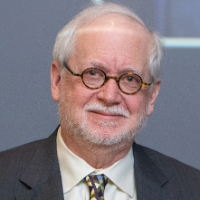
Dr. David L. Brown, retired from Lawrence Berkeley National Laboratory, is the 2024 recipient of the SIAM Prize for Distinguished Service to the Profession, and will be recognized at SIAM AN24. He received the prize “in recognition of his decades of commitment to enriching the computational science community.”
SIAM awards the Prize for Distinguished Service every year to an applied mathematician who has made distinguished contributions to the furtherance of applied mathematics on the national or international level.
Dr. Brown is a senior advisor in computing sciences at Lawrence Berkeley National Laboratory (Berkeley Lab). He holds a B.S. in physics and an M.S. in geophysics from Stanford University and earned his Ph.D. in applied mathematics from the California Institute of Technology (1982). His 38-year career with the U.S. Department of Energy National Laboratories included 14 years at Los Alamos National Laboratory, and 13 years at Lawrence Livermore National Laboratory, where he was technical lead of several major research projects and held a number of line and program management positions. He was a division director at Berkeley Lab (2011-2022). Dr. Brown’s research expertise and interests lie in the development and analysis of algorithms for the solution of partial differential equations.
He is particularly enthusiastic about promoting opportunities in computational science for young scientists from diverse backgrounds and is a founding member of the steering committee for the Department of Energy Computational Graduate Fellowship (CSGF) program, for which he is currently one of the co-principal investigators. More recently, in collaboration with colleagues at Berkeley Lab and the Sustainable Horizons Institute, he helped create and promote the Sustainable Research Pathways (SRP) program that brings faculty and students from diverse backgrounds for summer research experiences at Berkeley Lab. Learn more about Dr. Brown.
Q: Why are you excited to receive the award?
A: I am honored to receive this award from SIAM, as it recognizes my efforts to positively impact the fields of applied mathematics and computational science. Throughout my career as an applied mathematician and computational scientist, I've strived to contribute in ways that would maximally impact the field. Helping to develop and run programs like the CSGF and SRP has benefitted computational science by bringing new, diverse talent to the field. I am very pleased that the Brown Report had the impact that it did, and that it continues even today to be a relevant document describing opportunities for applied mathematicians, 15 years after its publication.
Q: Could you tell us about the research that won you the award?
A: For programs like CSGF and SRP to have the greatest impact on both its direct beneficiaries, and on the field of computational science, it is important that careful thought go into their creation and structure. I've been very lucky to work with teams of like-minded individuals who have helped design, implement, and maintain these programs over many years. I'm very gratified that both of these programs have had a very strong track record of accomplishment, and that participants in the programs have been able to develop very productive careers as both scientists and leaders.
Q: What does your work mean to the public?
A: Programs like the CSGF and SRP have led to new opportunities for young scientists who otherwise might not have chosen careers in computational science, or even science and engineering. The Brown Report provided useful input that helped federal officials make decisions on how to support the field of applied mathematics, with corresponding impact on scientific advances that have benefit to the public.
Q: What does being a member of SIAM mean to you?
A: SIAM is my professional community. It has been an important vehicle throughout my career for meeting and interacting with other members and for contributing to the community.
Interested in recommending someone for the SIAM Prize for Distinguished Service to the Profession? Suggest a recipient!
Suncica Canic
Dr. Suncica Canic, University of California, Berkeley, will deliver the 2024 AWM-SIAM Sonia Kovalevsky Lecture at SIAM AN24. Dr. Canic is recognized as “a highly influential applied mathematician working in modeling, analysis, and computations of partial differential equations. She has made profound contributions across a wide spectrum of mathematics, ranging from mathematical analysis of complex physical phenomena, designing new numerical methods, proving their convergence, testing them in rigorous environments, and then applying these workhorse tools to highly practical problems of breakthrough practical importance.” This year’s Kovalevsky Lecture, titled “Mathematics for Bioartificial Organ Design,” will take place on Wednesday, July 10 at 10:45 a.m. PT.
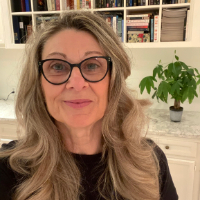
The Association for Women in Mathematics (AWM) and SIAM award this prize every year to highlight significant contributions of women to applied or computational mathematics. The lecture is normally given at the SIAM Annual Meeting.
Dr. Canic earned her Ph.D. in the area of nonlinear hyperbolic conservation laws from the applied mathematics and statistics department at SUNY Stony Brook (1992). Following her move to the University of Houston, she collaborated with several medical specialists at the Texas Medical Center in Houston on problems related to cardiovascular treatment and diagnosis (1999). She moved to the mathematics department at the University of California (UC) Berkeley in the fall of 2018 and is currently serving as a full professor.
Her research on deterministic and stochastic partial differential equations/fluid-structure interaction and numerical methods development influenced the design of a stent for a bioartificial aortic valve placement, produced by a private consortium in Houston, as well as the design of a bioartificial pancreas investigated at the UC San Fransisco Biodesign Laboratory.
Dr. Canic's career is marked by numerous prestigious accolades and distinguished positions, including being named a 2014 SIAM Fellow and serving as the only woman to hold the esteemed Cullen Distinguished Professorship at the University of Houston. Moreover, she received the U.S. Congressional Recognition for Top Women in Technology (2006) and was honored for her research by the National Science Foundation as a Distinguished MPS Lecturer (2007). In 2011, she was invited to present a congressional briefing on applied mathematics on Capitol Hill, and in 2018, received the most prestigious award at the University of Houston, the Esther Farfel Award.
Dr. Canic was also elected a Miller Research Fellow by the Miller Institute for Basic Research in Science, and an American Mathematical Society fellow (2020). She has served on the Board of Governors of the Institute for Mathematics and its Applications in Minneapolis and served as the Program Director of the SIAM Activity Group on Analysis of Partial Differential Equations. Learn more about Dr. Canic.
Q: Why are you excited to receive the award?
A: The AWM-SIAM Sonia Kovalevsky Lecture Prize is awarded annually to anyone in the scientific or engineering community whose work highlights the achievements of women in applied or computational mathematics. This prestigious award pays tribute to Sonia Kovalevsky, a Russian mathematician renowned for her significant contributions to analysis, partial differential equations, and mechanics. Notably, Kovalevsky was a trailblazer for women in mathematics worldwide, being the first woman to earn a doctorate in mathematics at a time when women were generally excluded from university education in many Northern European countries. Receiving this award is a profound honor for me, as it is associated with Sonia Kovalevsky's name and acknowledges achievements in the realm of applied partial differential equations and computational mathematics, the research areas of my primary interest.
Q: Could you tell us about the research that won you the award?
A: I work on applied analysis of partial differential equations, algorithm design, numerical analysis, and computational modeling of partial differential equations, particularly as they apply to physical and physiological phenomena. My main focus is on fluid-structure interaction (FSI), specifically exploring the interplay between incompressible, viscous fluids and various structures, such as elastic, viscoelastic, or poroelastic solids, motivated by biomedical applications.
Together with my students, postdocs, and collaborators, I developed truly constructive, robust techniques to prove the existence of weak solutions for various classes of FSI problems, opening the door to complex but practical numerical schemes. I extended this work to a range of different formulations and physical problems, in the context of both deterministic and stochastic frameworks. In partnership with Dr. Paniagua of the Texas Heart Institute, I applied the aforementioned mathematical theory and algorithm design to help design a vascular device called a stent used to anchor the first self-expanding dry valve in the world. In the latest development, the above-mentioned research on FSI with poroelastic structures has played a pivotal role in shaping the design of an implantable bioartificial pancreas without the need for immunosuppressant therapy. This groundbreaking device is currently undergoing investigation in Dr. Roy's UC San Fransisco Biodesign Laboratory as part of an innovative approach to diabetes treatment.
Q: What does your work mean to the public?
A: My research on deterministic and stochastic partial differential equations/fluid-structure interaction and numerical methods development influenced the design of a stent for a bioartificial aortic valve placement, produced by a private consortium in Houston. Furthermore, my research has played a significant role in shaping the design of a bioartificial pancreas, which is currently under investigation at UCSF's Biodesign Laboratory. In the future, individuals with a malfunctioning pancreas will have the option to use a bioartificial pancreas implanted in their arm, for example. This device will be designed with the integration of partial differential equations and numerical simulations to ensure optimal performance.
Q: What does being a member of SIAM mean to you?
A: As the largest international society for industrial and applied mathematics, my membership in SIAM provides an unparalleled platform for networking, knowledge sharing, and professional development in the field of industrial and applied mathematics. I will always remember my first contact with a National Science Foundation officer, which took place at a SIAM Annual Meeting many years ago, where one of the NSF's officers gave a short presentation to recent Ph.D. students on crafting grant proposals and navigating NSF funding applications. A year later I received my first NSF award.
Interested in submitting a nomination for the AWM-SIAM Sonia Kovalevsky Lecture? Mark your calendar - the next call for nominations opens August 1, 2024.
Rujeko Chinomona
Dr. Rujeko Chinomona, Temple University, is one of the 2023 recipients of the SIAM Student Paper Prize. She received the prize for her paper, “Implicit-Explicit Multirate Infinitesimal GARK Methods,” co-authored with Daniel R. Reynolds of Southern Methodist University. The paper was published in SIAM Journal on Scientific Computing, Vol. 43 (5), pp. A3082-A3113 (2021).
Due to the absence of a SIAM Annual Meeting in 2023, she will be recognized at SIAM AN24 and will deliver a talk titled “Imex-Mri-Gark: Flexible and Efficient High-Order Methods for Time Dependent Multiphysics Problems” on Friday, July 12 at 2:30 p.m. PT.
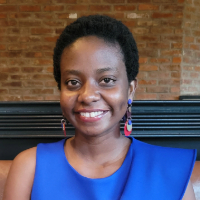
The SIAM Student Paper Prize is awarded annually to the student author(s) of the most outstanding paper(s) accepted by SIAM journals within the three years preceding the nomination deadline. The award is based solely on the merit and content of the student's contribution to the submitted paper. Up to three awards are made every year.
Dr. Chinomona is currently a research assistant professor (postdoc) in the mathematics department at Temple University. Her research interests include numerical methods for differential equations and enabling their widespread adoption in software for real-world applications. She specializes in high-order time stepping techniques for challenging dynamical systems and has also made contributions to open-source scientific software projects that bridge the gap between algorithm development and practical application. She holds a bachelor's degree from Georgia College and State University. She earned a Ph.D. and master’s degree in computational and applied mathematics from Southern Methodist University (2021) and Rice University, respectively.
Q: Why are you excited to receive the award?
A: I'm thrilled to receive this award for several reasons. Firstly, I dedicated significant time to crafting this paper during the COVID-19 lockdowns, which presented unique challenges. However, amidst the chaos, I found solace in focusing on my work. Secondly, having one's efforts recognized is always exhilarating, especially when it comes from a community of esteemed applied mathematicians within my professional society, whom I deeply respect. I owe a debt of gratitude to my Ph.D. advisor, Daniel Reynolds, with whom I collaborated on this paper; his support and mentorship were pivotal in this journey. Ultimately, receiving this award validates the time and effort invested in my research and will be cherished for years to come.
Q: Could you tell us about the research that won you the award?
A: IMEX-MRI-GARK methods are a class of multirate time integration schemes that use two-time step sizes to optimally evolve systems of ordinary differential equations (ODEs). They are particularly focused on three-way additively partitioned ODE systems with a slow-implicit (stiff) component, a slow-explicit (non-stiff) component, and a fast component. This type of splitting is common in advection-diffusion-reaction systems, where spatial discretizations at the slow time scale require the implicit treatment of diffusion and the explicit treatment of advection, while the reactions account for the fast dynamics. Using large time steps for the slow dynamics, which tend to be communication-intensive, offers potential savings in computational and communication costs on large-scale problems.
Q: What does your work mean to the public?
A: I hope the algorithms I create will help solve complex differential equations, such as those in climate simulations and fusion studies. It's crucial for society to understand and address climate change for long-term sustainability. Additionally, as our energy consumption increases, finding clean energy sources, for example through fusion, is essential for a brighter future on this planet.
Q: What does being a member of SIAM mean to you?
A: Being a SIAM member has profoundly enriched my professional growth. Joining as a graduate student, I fondly recall serving as my chapter's student treasurer and attending my first SIAM conference. The connections and mentorship I've gained through SIAM have been invaluable, and I cherish being part of a community that values the transformative power of the mathematical sciences.
Interested in submitting a nomination for the SIAM Student Paper Prize? Mark your calendar - the next call for nominations opens September 15, 2024.
Heather Lynn Cihak
Dr. Heather Lynn Cihak, University of Colorado Boulder, is one of the 2024 recipients of the SIAM Student Paper Prize. She received the prize for her paper, “Multiscale Motion and Deformation of Bumps in Stochastic Neural Fields with Dynamic Connectivity,” co-authored with Zachary P. Kilpatrick, University of Colorado Boulder. The paper was published in Multiscale Modeling and Simulation, Vol. 22 (1), pp. 178-203 (2024).
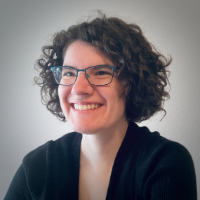
She will be recognized at SIAM AN24 and will deliver a talk titled “Multiscale Motion and Deformation of Bumps in Stochastic Neural Fields with Dynamic Connectivity” on Friday, July 12 at 3:00 p.m. PT.
The SIAM Student Paper Prize is awarded annually to the student author(s) of the most outstanding paper(s) accepted by SIAM journals within the three years preceding the nomination deadline. The award is based solely on the merit and content of the student's contribution to the submitted paper. Up to three awards are made every year.
Dr. Cihak earned her bachelor’s degree in mathematics and engineering physics from the University of Wisconsin, Platteville (2019) and her Ph.D. in applied mathematics from the University of Colorado Boulder (2024). She is currently a researcher at the University of Colorado Boulder and will have a postdoctoral teaching position at the University of Minnesota Twin Cities- in the fall of 2024. Her research interests lie in mathematical neuroscience and developing models of the brain activity thought to underlie memory and learning processes. Recently, she has also become interested in learning more about the unique neurobiology of the platypus.
Q: Why are you excited to receive the award?
A: It is very rewarding and validating to receive this award. I believe it also the first award I have ever received in regard to my research. Thus, it is very exciting, and I am very grateful to receive it.
Q: Could you tell us about the research that won you the award?
A: The research is on working memory, the ability to temporarily store information that is key for many important organismal behaviors, such as navigation. Working memory requires robust integration and flexible maintenance of information to achieve tasks. Our focus is on delayed estimates involving the storage, retention, and report of an object feature value. We are motivated by observations that abnormalities in subject responses during working memory tasks can indicate neuropathologies. Thus, identifying the mechanisms supporting working memory function could guide diagnostics for neuropathologies. Biologically informed computational models have been useful in replicating dynamics of persistent neural activity recorded during delayed visuospatial working memory tasks. Our focus is on extending neural field models and developing mathematical techniques to better understand how neural mechanisms, such as short-term plasticity, and network dynamics influence working memory response errors.
Q: What does your work mean to the public?
A: Developing and analyzing biologically informed nonlinear dynamical models is incredibly useful for providing a testbed for physiological theories. The goal is to gain insight into mechanisms hypothesized to impact complex phenomena, such as brain activity patterns in neural circuits. Such insights can inform future experiments that will then inform the next iteration of models. I hope my work can act as a small steppingstone in this cycle to better understand memory processes.
Q: What does being a member of SIAM mean to you?
A: SIAM has provided me with a wonderful platform to present my findings and learn from others. The conferences have been of great value to me, and I am so happy to be a part of this community.
Interested in submitting a nomination for the SIAM Student Paper Prize? Mark your calendar - the next call for nominations opens September 15, 2024.
Perfect Yayra Gidisu
Dr. Perfect Yayra Gidisu, Eindhoven University of Technology, is one of the 2023 recipients of the SIAM Student Paper Prize. She received the prize for her paper, “A Generalized CUR Decomposition for Matrix Pairs,” co-authored with Michiel E. Hochstenbach of Eindhoven University of Technology. The paper was published in SIAM Journal on Mathematics of Data Science, Vol. 4 (1), pp. 386- 409 (2022).
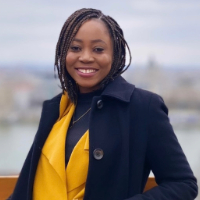
Due to the absence of a SIAM Annual Meeting in 2023, she will be recognized at SIAM AN24, and will deliver a talk titled “A Generalized Cur Decomposition for Matrix Pairs” on Friday, July 12 at 2:00 p.m. PT.
The SIAM Student Paper Prize is awarded annually to the student author(s) of the most outstanding paper(s) accepted by SIAM journals within the three years preceding the nomination deadline. The award is based solely on the merit and content of the student's contribution to the submitted paper. Up to three awards are made every year.
Dr. Gidisu earned her master's degree in quantitative finance from the University of Milan (2018), and her Ph.D. in applied mathematics from Eindhoven University of Technology (2023). She is now a credit risk model developer at ING bank Netherlands. Her current research interests include developing methods for low-rank matrix factorization.
Q: Why are you excited to receive the award?
A: Receiving a SIAM Student Paper Prize is indeed a great honor, and I am deeply grateful for this recognition. It's incredibly rewarding to know that my work has been acknowledged by such a respected organization within the research community. This recognition serves as a tremendous source of encouragement and motivation for me to continue delving deeper into this topic. I am genuinely enthusiastic about the opportunity to further explore and contribute to this field.
Q: Could you tell us about the research that won you the award?
A: Understanding the underlying structure of a data matrix and extracting valuable insights are fundamental challenges in data analysis. In many cases, multiple data matrices need to be analyzed simultaneously to fully grasp the complexity of the dataset. Our research introduces a novel approach called a generalized CUR (GCUR) decomposition for matrix pairs, which enables the simultaneous decomposition of two matrices into a small subset of their rows and columns. This algorithm is particularly valuable for applications where the focus is on extracting discriminative features from one dataset compared to another.
Q: What does your work mean to the public?
A: My work in developing algorithms for CUR matrix decomposition aims to enhance data analysis and processing capabilities for various applications. By efficiently decomposing matrices into smaller, interpretable components, our work facilitates improved understanding and extraction of valuable insights from complex datasets. Ultimately, this contributes to advancements in fields such as machine learning, data mining, and scientific computing, benefiting both researchers and practitioners in their endeavors.
Q: What does being a member of SIAM mean to you?
A: My research gains significance through the supportive community of applied mathematicians fostered by organizations like SIAM. SIAM conferences have served as a platform for sharing my work, and I deeply appreciate this opportunity. Engaging with fellow researchers is crucial to me, and SIAM provides an excellent forum for collaboration across diverse fields in academia and industry.
Interested in submitting a nomination for the SIAM Student Paper Prize? Mark your calendar - the next call for nominations opens September 15, 2024.
Shu Liu
Dr. Shu Liu, University of California, Los Angeles (UCLA) is one of the 2024 recipients of the SIAM Student Paper Prize. He received the prize for his paper, “Neural Parametric Fokker--Planck Equation,” co-authored with Wuchen Li, University of South Carolina; Hongyuan Zha, The Chinese University of Hong Kong; and Haomin Zhou, Georgia Institute of Technology. The paper was published in SIAM Journal on Numerical Analysis, Vol. 60 (3), pp. 1385-1449 (2022).
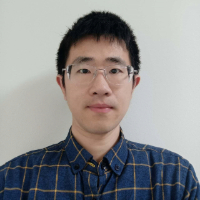
He will be recognized at SIAM AN24 and will deliver a talk titled “Parametrized Fokker-Planck Equation on the Generative Model” on Friday, July 12 at 3:20 p.m. PT.
The SIAM Student Paper Prize is awarded annually to the student author(s) of the most outstanding paper(s) accepted by SIAM journals within the three years preceding the nomination deadline. The award is based solely on the merit and content of the student's contribution to the submitted paper. Up to three awards are made every year.
Dr. Liu received his bachelor's degree in mathematics from Zhejiang University (2016). He received his Ph.D. degree in computational science and engineering with a minor in mathematics from Georgia Institute of Technology (2022). He is now a Hedrick Assistant Adjunct Professor at UCLA in the department of mathematics. His current research interest is developing novel numerical methods for partial differential equations, as well as optimal transport, optimal control, and machine learning. Learn more about Dr. Liu.
Q: Why are you excited to receive the award?
A: I feel really honored to receive a SIAM Student Paper Prize. Together with my co-authors, we put great effort into this research project. I feel very happy that our effort is recognized, and I am encouraged to see that the academic community finds our work inspiring. I am enthusiastic about carrying on the current research to develop numerical algorithms for broader scientific computing problems.
Q: Could you tell us about the research that won you the award?
A: In this work, we develop and analyze a numerical method for the Fokker-Planck equations by leveraging the generative model from deep learning. Generally speaking, we formulate the Fokker-Planck equation as a system of ordinary differential equations (ODEs) on finite-dimensional parameter space with the parameters inherited from the generative model such as normalizing flows. We utilize the crucial fact that the Fokker-Planck equation can be viewed as the L2-Wasserstein gradient flow of the Kullback-Leibler (KL) divergence to derive the ODEs as an analogous gradient flow on the parameter space of the generative model.
For numerical computation, we design a variational semi-implicit scheme for the time discretization of the proposed ODE. Such an algorithm is sampling-based and readily handles computation in higher-dimensional spaces. Moreover, we provide upper bounds for both the asymptotic convergence and error analysis for our method. By using the gradient flow nature of the equation, we further prove that the numerical solution preserves accuracy uniformly in time.
Q: What does your work mean to the public?
A: The Fokker-Planck equation models the density evolution of the stochastic dynamics. The equation has broad applications in statistical mechanics, information theory, financial mathematics, etc. Our research provides a computational scheme to project this time evolutional equation onto the finite-dimensional parameter space of a generative model. Such treatment offers a sampling-friendly numerical solver to the equation scalable to higher dimensional spaces. This leads to an efficient and convenient way to simulate the Fokker-Planck equation. I believe our research will also inspire the computational methods for more general Wasserstein geometric flows, which play increasingly important roles in machine learning and data science.
Q: What does being a member of SIAM mean to you?
A: Being a member of SIAM gives me great opportunities to learn about cutting-edge research in applied math and provides me with a perfect platform for presentation and communication. I used to present my work at SIAM conferences and found that my research greatly benefitted from the inspiring comments and discussions from and with the participants. I appreciate SIAM for creating these wonderful opportunities for scholars to exchange thoughts, cultivate new ideas, and seek productive collaborations.
Interested in submitting a nomination for the SIAM Student Paper Prize? Mark your calendar - the next call for nominations opens September 15, 2024.
Jinyoung Park and Huy Tuan Pham
Dr. Jinyoung Park, New York University, and Dr. Huy Tuan Pham, Stanford University, are the recipients of the 2024 Dénes König Prize. The team received the prize for their “outstanding research in discrete mathematics, in special recognition of their ingenious, short, and surprising proof of the Kahn-Kalai conjecture.”
They will be recognized at the 2024 SIAM Conference on Discrete Mathematics (DM24), taking place July 8 - 11, 2024, and co-located with SIAM AN24 in Spokane, Washington. Dr. Pham will deliver a talk titled “When Are Structures Robust Under Randomness?” on Monday, July 8 at 2:00 p.m. PT.
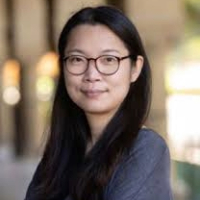
The SIAM Activity Group on Discrete Mathematics awards the prize every two years to an individual or individuals in their early career for outstanding research contributions in an area of discrete mathematics, as evidenced by a publication in a peer-reviewed journal within the three calendar years prior to the award year. Discrete mathematics includes combinatorics, graph theory, cryptography, discrete optimization, mathematical programming, coding theory, information theory, game theory, and theoretical computer science.
Dr. Jinyoung Park is an assistant professor at the Courant Institute of Mathematical Sciences at New York University. She studies threshold phenomena of random discrete structures and is currently working to identify patterns and typical structures within such random networks. She is a first-generation college graduate, and after seven years as a secondary school teacher in South Korea, she went on to earn a mathematics Ph.D. from Rutgers University. Dr. Park’s story demonstrates the importance of role models at all levels of one’s education and the fact that it is never too late to begin anew. Learn more about Dr. Park.
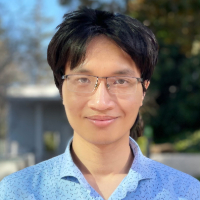
Dr. Huy Tuan Pham is currently a Clay Research Fellow based at Stanford University. He earned a BS in mathematics and MS in statistics from Stanford University (2018), and Master of Advanced Study in mathematics from the University of Cambridge (2019). He received his Ph.D. from Stanford University (2023) where he was advised by Jacob Fox. Dr. Pham’s main research interest is in probabilistic and extremal combinatorics, and related applications in probability theory, additive combinatorics and number theory, and theoretical computer science. His recent works focus on the study of thresholds in random discrete systems and connections to suprema of stochastic processes, as well as other applications of the regularity method and probabilistic ideas in combinatorics, probability, and number theory. Learn more about Dr. Pham.
The authors collaborated on their answers to our questions.
Q: Why are you all excited to receive the award?
A: Receiving the Dénes König Prize is a great honor, and we are very excited that our work receives this recognition. This is very meaningful encouragement for further development along the directions of the research to be built up.
Q: Could you tell us about the research that won you the award?
A: The paper resolves an important conjecture in probabilistic combinatorics, the Kahn-Kalai conjecture, which is about the transition point at which structures emerge in random systems such as random graphs. A random graph is a network where connections are realized independently at random. One very often wants to understand when certain structures emerge in a random graph as one continuously increases the density of connections. It turns out that capturing the transition point at which structures emerge can be extremely challenging, and even in specific special cases, this is the content of multiple break-through works and important conjectures in probabilistic combinatorics. On the other hand, there are very simple obstructions under which we are guaranteed that emergence of structures cannot be possible. In 2006, Kahn and Kalai made a beautiful, insightful, and bold conjecture that the transition point at which structures emerge is closely captured by when the simple obstructions cease to exist. The conjecture gives a general principle behind the emergence of structures, which is a beautiful message that goes much beyond the motivation of locating the transition point.
Q: What does your team’s work mean to the public?
A: Random graphs and other random discrete systems are ubiquitous in real life. They are used to model a number of networks that appear in practice, such as traffic or collaboration networks, or networks of epidemic transmission. Finding structures in these networks and understanding when these networks go through important structural changes, are among the important questions that would come up. The Kahn-Kalai conjecture allows us to reduce these questions to questions about the existence of simple obstructions. In many cases, this is the route that allows us to pinpoint accurately when structures exist, though a lot more remains to be developed so we have a general and robust method for understanding structures in random networks.
Q: What does being a member of SIAM mean to you both?
A: SIAM journals and activities, including the SIAM Conferences on Discrete Mathematics, are great opportunities for us, as well as other people in the area, to organize, share, and stay up to date on recent developments in the community. This is vital to the development of research in the area.
Interested in submitting a nomination for the Dénes König Prize? Mark your calendar - the next call for nominations opens May 1, 2025.
Benedetto Piccoli
Dr. Benedetto Piccoli, Rutgers University–Camden, is the 2024 recipient of the W. T. and Idalia Reid Prize. He received the prize for “his contributions to the fields of optimal control, conservation laws, and applications to vehicular traffic, robotics, and biology.”
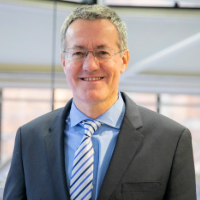
He will be recognized at SIAM AN24 and will deliver a talk titled “100 Years of Traffic Models: From Road Tolls to Autonomy” on Monday, July 8 at 12:00 p.m. PT.
SIAM awards this prize every year to one individual for research in, or other contributions to, the broadly defined areas of differential equations and control theory.
Dr. Piccoli is a university professor and the Joseph and Loretta Lopez Chair Professor of Mathematics at Rutgers University–Camden. He also served as Vice Chancellor for Research. His research interests span various areas of applied mathematics, including control theory, traffic flow on networks, crowd dynamics, math finance and application to autonomous driving, population health, and bio-medical systems. He is an author of more than 300 research papers and seven books and is the founding editor of Networks and Heterogeneous Media. Dr. Piccoli was the recipient of the 2009 Fubini Prize, a plenary speaker at ICIAM 2011, and named a 2012 fellow of the American Mathematical Society. Learn more about Dr. Piccoli.
Q: Why are you excited to receive the award?
A: In my opinion, the W. T. and Idalia Reid Prize is the best award for mathematicians working on control theory and related areas. The previous award winners include many of the best control theorist of last half century, some of which I had the honor to work or interact with. Control theory lies at the boundary of multiple disciplines, including mathematics, engineering, and physics. This renders research in control theory particularly intriguing, not only for the contribution to the general knowledge in mathematics, but also for the impact on other disciplines and the society at large. Receiving this prize is the highest honor recognizing the contributions to various areas of control theory during my career.
Q: Could you tell us about the research that won you the award?
A: The prize citation mentions contributions to optimal control and conservation laws. Moreover, the prize committee recognized the applications to vehicular traffic, robotics, and biology. For the sake of brevity, let me focus on two contributions: the classification of optimal synthesis for systems in two dimensions and traffic modeling. The problem of classifying mathematical objects started as early as Euclidean geometry more than two thousand year ago. For dynamical systems, the seminal work of Andronov, Pontryagin, and Peixoto allowed to classify two-dimensional, structurally stable dynamics via topological graphs. In a nutshell, in a series of manuscripts, a similar classification was carried out for the dynamics generated by the solution of optimal control problems. The results were presented at the prestigious Arnolds’ seminar in Moscow. Regarding traffic, in last twenty years I helped develop models to monitor traffic in large cities and control traffic with autonomous vehicles. A number of these models involve conservation laws, which are nonlinear partial differential equations encountered in various areas of mathematical physics, such as gas and fluid dynamics. One of the main contributions was the development of a theory for conservation laws on graphs.
Q: What does your work mean to the public?
A: In 2022, we performed the world largest experiments with 100 autonomous vehicles on an open highway in Nashville, Tennessee, by taming waves and reducing fuel consumption for the overall traffic. This research spanned over 10 years, and in previous experiments, we showed how a single autonomous vehicle on a ring-road with other 20 vehicles can reduce the fuel consumption of 40% for the whole fleet. We expect that the fuel consumption reduction on the highway experiment will be around 10% or more. The technology used is a modification of the automated cruise control, which is available on several cars sold in the U.S. The experiment was led by the CIRCLES Consortium, which includes three car manufacturers; thus, we hope that this research will improve traffic as this technology will be adopted. Moreover, the experiment showed how the combination of mathematical models, including control theory and conservation laws, combined with AI tools can lead to major societal impact on problems involving large crowds. Future applications may include other socio-economic systems.
Q: What does being a member of SIAM mean to you?
A: I consider myself an applied mathematician, developing new math often inspired by real applications as those to traffic. SIAM has been always the best venue for my work, including the series of journals, the workshops, the conferences, as well as the community in broad sense. Being a member of SIAM means being part of a wide and diverse community devoted to the advancement of science, with special focus on applied mathematics, and societal benefits that will follow from the research. I had the honor to serve as editor for SIAM Journal on Control and Optimization, which has been my to-go journal for my work on control. Moreover, I published my work in SIAM Journal on Applied Dynamical Systems, SIAM Journal on Mathematical Analysis, SIAM Journal on Applied Mathematics, SIAM Journal on Scientific Computing, SIAM Journal on Numerical Analysis, Multiscale Modeling and Simulation, and a SIAM book.
Interested in submitting a nomination for the W. T. and Idalia Reid Prize? Mark your calendar - the prize is currently accepting nominations until October 15, 2024.
Michael Schmischke
Dr. Michael Schmischke, Free State of Saxony and Chemnitz University of Technology, is one of the 2023 recipients of the SIAM Student Paper Prize. He received the prize for his paper, “Approximation of high-dimensional periodic functions with Fourier-based methods,” co-authored with Daniel Potts, Chemnitz University of Technology. The paper was published in SIAM Journal on Numerical Analysis, Vol. 59 (5), pp. 2393-2429 (2021).
Due to the absence of a SIAM Annual Meeting in 2023, he will be recognized at SIAM AN24, and will deliver a talk titled “Interpretable Approximation of High-Dimensional Data Based on the Analysis of Variance Decomposition” on Friday, July 12 at 2:20 p.m. PT.
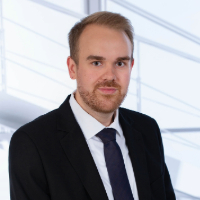
The SIAM Student Paper Prize is awarded annually to the student author(s) of the most outstanding paper(s) accepted by SIAM journals within the three years preceding the nomination deadline. The award is based solely on the merit and content of the student's contribution to the submitted paper. Up to three awards are made every year.
Dr. Schmischke grew up in the small town of Schoeneck in the Free State of Saxony in Germany. He studied mathematics and computer science at Chemnitz University of Technology, earning his bachelor’s (2018) and master degrees (2019). He completed his Ph.D. as a member of the research group of Dr. Daniel Potts at Chemnitz University (2022), and then became Chief of Staff to the Minister for Science, Culture and Tourism in the Free State of Saxony. Since 2021, he has been the chairman of MIT Chemnitz University, and was the Presidential Representative for Young Scientists at Chemnitz University (2022). Learn more about Dr. Schmischke.
Q: Why are you excited to receive the award?
A: It is a great honor to receive the SIAM Student Paper Prize. During my time as a Ph.D. student, I always struggled with whether my research was relevant enough that other mathematicians cared for it. Receiving the award not only meant that this is indeed the case, but also brought further attention to it.
Q: Could you tell us about the research that won you the award?
A: Our work in the paper was the basis for an interpretable approximation model based on the ANOVA decomposition. We brought the ANOVA decomposition together with Fourier analysis and fast Fourier algorithms such as the NFFT. With parallel computing and those fast algorithms, we were able to obtain a fast approximation algorithm. The idea is based on the fact that most high-dimensional real-world problems have low effective dimensions, e.g., while having many variables, they don't have higher-order interactions between them. We not only obtain an approximation, but we are also able to identify which variables and which variable interactions are important.
Q: What does your work mean to the public?
A: Our work in the paper was the basis for an interpretable approximation model based on the ANOVA decomposition. We have since worked with many real-world data examples, like the spreading of forest fires. The model is intrinsically able to detect important parameters, which may, for example, simplify measurement processes. As a result, it may simplify the detection of forest fires. Since forest fires are an important issue in this time of significant climate change, I would be glad if this could make a tiny contribution.
Q: What does being a member of SIAM mean to you?
A: SIAM journals are highly recognized, and for me, it was very important to try and publish there. Being a SIAM member seemed like the natural choice, and it connected me better to the community.
Interested in submitting a nomination for the SIAM Student Paper Prize? Mark your calendar - the next call for nominations opens September 15, 2024.
Lucas Slot
Dr. Lucas Slot, ETH Zürich, is one of the 2024 recipients of the SIAM Student Paper Prize. He received the prize for his paper, “Sum-of-Squares Hierarchies for Polynomial Optimization and the Christoffel--Darboux Kernel,” written while he was a student at Centrum Wiskunde & Informatica, Amsterdam. The paper was published in SIAM Journal on Optimization, Vol. 32 (4), pp. 2612- 2635 (2022).
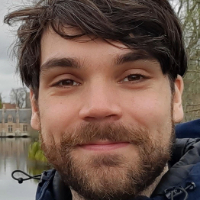
The SIAM Student Paper Prize is awarded annually to the student author(s) of the most outstanding paper(s) accepted by SIAM journals within the three years preceding the nomination deadline. The award is based solely on the merit and content of the student's contribution to the submitted paper. Up to three awards are made every year.
Dr. Slot earned his bachelor's degrees in mathematics and computer science from the University of Amsterdam (2016), and his master's degree in mathematics from the University of Bonn (2018). He received his Ph.D. from Centrum Wiskunde & Informatica and Tilburg University (2022). Currently, he is a postdoc in the group of David Steurer at ETH Zurich. His main research interest is in polynomial optimization and semidefinite programming approaches to hard problems in optimization, discrete geometry, combinatorics, statistics, and data science.
Q: Why are you excited to receive the award?
A: I am very honored to receive the SIAM Student Paper Prize. This award is a great recognition of the community's interest in my field of research, and my contributions to it. It motivates me to continue working in this direction.
Q: Could you tell us about the research that won you the award?
A: My research focuses on polynomial optimization problems, where one is tasked to minimize a polynomial under polynomial constraints. These problems are generally very difficult to solve exactly. However, they can be approximated up to arbitrary precision by a sequence of semidefinite programs of increasing size. In this paper, I study the quality of these approximations. In particular, I am able to unify ideas from several other works on this topic into a single framework. A primary motivation was to present a clear method which will hopefully be useful to other researchers in the future.
Q: What does your work mean to the public?
A: Polynomial optimization shows up in real-life problems in a variety of areas, such as finance, robotics, data science, and energy distribution. Understanding the methods we use to tackle polynomial optimization problems at a theoretical level allows us to apply them safely and effectively in practice.
Q: What does being a member of SIAM mean to you?
A: I am grateful to SIAM for fostering a diverse community of pure, applied, and industrial mathematicians. Discussions with other researchers at SIAM conferences have been a major source of inspiration for me and have led to fruitful collaborations. SIAM journals and conferences have also been one of the main ways for me to disseminate my research.
Interested in submitting a nomination for the SIAM Student Paper Prize? Mark your calendar - the next call for nominations opens September 15, 2024.
John C. Urschel
Dr. John C. Urschel, Massachusetts Institute of Technology (MIT), is the 2024 recipient of the Richard C. DiPrima Prize, and will be recognized at SIAM AN24. He received the prize for “his outstanding contributions to fundamental problems in applied linear algebra developed in his Ph.D. dissertation entitled ‘Graphs, Principal Minors, and Eigenvalue Problems’.”
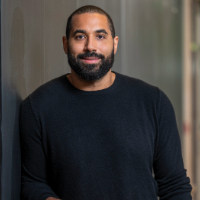
SIAM awards the Richard C. DiPrima Prize every two years to one early career researcher who has done outstanding research in applied mathematics and who has completed his/her doctoral dissertation and completed all other requirements for his/her doctorate.
Dr. Urschel is an assistant professor in the mathematics department at MIT and a Junior Fellow at the Harvard Society of Fellows. Previously, he was a member of the Institute for Advanced Study. He received his Ph.D. in mathematics from MIT (2021), under the supervision of Michel Goemans. His research is focused on fundamental problems in matrix analysis, numerical linear algebra, and spectral graph theory. Learn more about Dr. Urschel.
Q: Why are you excited to receive the award?
A: I received a great deal of support and mentorship from a lot of people during my Ph.D., especially Michel Goemans and Alan Edelman. I was very excited to be able to tell both of them that I received this award. Michel, my Ph.D. advisor, was especially involved in the proofreading of the thesis.
Q: Could you tell us about the research that won you the award?
A: My research is focused on answering fundamental questions in applied linear algebra, often with implications for other areas of mathematics and computer science. My thesis focused on four topics: determinantal point processes, inverse eigenvalue problems, graph drawing, and moment-based eigenvalue algorithms. The tools used to solve these problems are quite varied in nature, including algebraic graph theory, linear algebra over finite fields, orthogonal polynomials, trace theorems, and other ideas. In each of these four stories, the hero remains the same – linear algebra saves the day.
Q: What does your work mean to the public?
A: I think my specific work is quite removed from the ideas that the general non-mathematical public thinks or cares about, but that my research is quite important in application. Matrix computations underpin many areas of science and the understanding of networks through linear algebraic techniques has proven to be a powerful tool.
Q: What does being a member of SIAM mean to you?
A: I'm proud to be a member of SIAM and take part in a community that values the importance of both mathematics and computation. Simply put, SIAM is an integral part of the applied mathematics community.
Interested in submitting a nomination for the Richard C. DiPrima Prize? Mark your calendar - the next call for nominations opens May 1, 2025.
Karen E. Willcox
Dr. Karen E. Willcox, University of Texas at Austin, Santa Fe Institute, is the 2024 recipient of the Theodore von Kármán Prize. She received the prize for “her important contributions to computational science and engineering. Professor Willcox has pioneered the development and use of model reduction methods for optimal design, optimal control, uncertainty quantification, decision-making, and digital twins. Her fundamental work has had broad impact in many application areas including inverse problems, optimal design, aerospace engineering and precision medicine.”
She will be recognized at SIAM AN24 and will deliver a talk titled “From Reduced-Order Modeling to Scientific Machine Learning” on Thursday, July 11 at 11:00 a.m. PT.
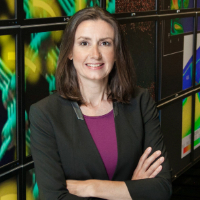
SIAM awards this prize every five years for a notable application of mathematics to mechanics and/or the engineering sciences made during the five to ten years preceding the award. The award may be given for a significant achievement by one individual or a significant body of work that could have been produced by multiple contributors.
Dr. Willcox is Director of the Oden Institute for Computational Engineering and Sciences, Associate Vice President for Research, and professor of aerospace engineering and engineering mechanics at the University of Texas at Austin. She is also an external professor at the Santa Fe Institute. She is a 2018 SIAM Fellow, a fellow of the American Institute of Aeronautics and Astronautics and the U.S. Association for Computational Mechanics, and member of the National Academy of Engineering. Prior to joining the Oden Institute (2018), she spent 17 years as a professor at MIT, where she served as the founding Co-Director of the MIT Center for Computational Engineering and the Associate Head of the MIT Department of Aeronautics and Astronautics. Prior to joining the MIT faculty, she worked at Boeing Phantom Works with the blended-wing-body aircraft design group. Learn more about Dr. Willcox.
Q: Why are you excited to receive the award?
A: It's a great honor to have my work recognized by the Theodore von Kármán Prize. I have been incredibly fortunate to work with so many amazing students, postdocs, and collaborators, all of whom have enabled me to grow my research contributions over the years. As someone who has spent her career between applied mathematics, engineering, and computing, it is particularly rewarding to be recognized by an award that specifically targets interdisciplinary work across mathematics and the engineering sciences.
Q: Could you tell us about the research that won you the award?
A: Model reduction is a mathematical and computational field of study that derives low-dimensional models of complex systems. We take expensive simulation models—usually numerical simulators of physical systems governed by partial differential equations—and we use projection methods to derive a reduced-order model that is much faster to simulate. In the last 10 years, my group has been developing the Operator Inference methodology, which draws on the theory of classical projection-based model reduction but combines it algorithmically with a machine-learning viewpoint, in which the reduced-order model is learned non-intrusively from simulation data. The result is an approach that retains solid mathematical foundations and interpretability, while being flexible and easy to apply. In recent years, we have worked with collaborators to deploy these reduced-order models in diverse applications in optimal design, optimal control, uncertainty quantification, decision-making, and digital twins.
Q: What does your work mean to the public?
A: My group's reduced-order modeling methods speed up engineering and scientific simulations – a simulation that might take a full day can instead be executed in seconds. This means that engineering designers can explore many more design options, leading to safer, more efficient, and more effective engineering systems. It means that control systems can use better predictive models, leading to more efficient operations and reduced environmental impact. It also means that simulation becomes a more useful tool in aiding scientific discovery.
Q: What does being a member of SIAM mean to you?
A: I am passionate about using mathematics and computing to advance the positive impact of engineering on the world. As the first person in my family to attend college, I am also passionate about teaching, mentoring, and educating the next generation of interdisciplinary problem solvers. SIAM's open-minded and interdisciplinary community is such an important part of my professional pursuits of these passions. There are so many things I love about SIAM: the way it brings together people from across fields, with mathematics as a core but without old-fashioned disciplinary walls; the way it brings together people from across academia, industry, and government/national labs; its commitment to maintaining high scholarly publishing standards; and its commitment to fostering the next generation of researchers and practitioners. As an interdisciplinary researcher, I often felt in my early career that I did not properly fit anywhere. I am so grateful that I found SIAM and it became such a key part of my professional activities.
Interested in submitting a nomination for the Theodore von Kármán Prize? Mark your calendar - the next call for nominations opens May 1, 2028.
Stay Up-to-Date with Email Alerts
Sign up for our monthly newsletter and emails about other topics of your choosing.



